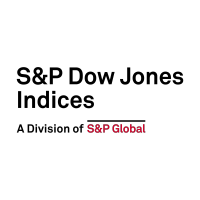Tag Archives: S&P 500 Equal Weight Index
A Long-Term Look at S&P 500 Equal Weight Index
How have S&P 500 Equal Weight Index’s exposures informed its performance over time? S&P DJI’s Hamish Preston and Invesco’s Nick Kalivas look under the hood at the features influencing S&P 500 EWI’s risk/return and explore what its expanding ecosystem, including sectors and futures could mean for its range of potential applications moving forward.
Diversification, Equity & Indices
The results of S&P DJI’s latest SPIVA U.S. Scorecard are in: Most large-cap active managers underperformed the S&P 500® for the 14th consecutive year in a row. 60% of active large-cap funds underperformed the S&P 500 in 2023, slightly better than the long-term average of 64%, and a relatively benign result considering the dominance of…
Magnificent Mid Caps and Sensational Small Caps
U.S. equities rose in 2023, with the mega-cap “Magnificent Seven” driving most of the S&P Composite 1500®’s 25% gain. While mega caps continued to outperform in January 2024, not all seven of the aforementioned group ranked highly. This has led to some market commentators looking to coin new phrases: “Sensational Six” or “Super Six” (the…
- Categories Equities
- Other Tags
2023 Market Review for Asian Investors
There are potential diversification benefits for Asian investors who incorporate U.S. equities to alleviate their tendency for a home country bias. Representing nearly 60% of the global equity market, as measured by the S&P Global BMI, U.S. equities provide a larger opportunity set outside of Asia, along with potential diversification due to different economic structures…
- Categories Equities
- Other Tags
An Elevating Effect on Equal Weight?
The trouncing of smaller caps by mega-cap stocks has been one of the hallmark market themes of this year, with the S&P 500® Top 50 outpacing the S&P SmallCap 600® by 30% YTD.1 As a result of its inherent small-cap bias, the S&P 500 Equal Weight Index (EWI) has suffered accordingly, underperforming the S&P 500…
- Categories Equities
- Other Tags
- Categories
- Equities
- Other Tags
Mean Reversion
Over more than 20 years of live history, the S&P 500® Equal Weight Index has outperformed the S&P 500 by a substantial margin. Between Dec. 31, 1990, and June 30, 2023, Equal Weight’s compound annual growth rate was 11.82%, well ahead of the cap-weighted S&P 500 at 10.55%. This performance edge is a product of…
- Categories Equities, Factors, S&P 500 & DJIA
- Other Tags
Equally Weighting within Sectors: Impact and Potential Applications
The outperformance of equal weight indices is well documented, especially for the S&P 500® Equal Weight Index’s 20 years of live history. Equal Weight’s relative returns reflect the impact of several important index characteristics. For example, smaller-size exposure and (anti-) momentum effects together account for around 75% of the historical variation of its relative returns….
When the Winds Change
“Change is the investor’s only certainty.” Thomas Rowe Price, Jr. 2022 marked several major changes in market trends amid a substantial shift in global macroeconomic regimes. After historic levels of stimulus, multi-decade highs in inflation across several major economies led to monetary tightening. This shift weighed on asset classes in many regions, and traditional routes…
- Other Tags
Examining Equal Weight
In this tumultuous market characterized by Fed rate hikes, elevated inflation and a strong dollar, mega-cap growth companies have suffered heavy losses, paced by recent “Big Tech” earnings disappointments from Meta, Microsoft, Alphabet, Amazon and others. The S&P 500® Top 50 declined by 19% over the past 12 months, underperforming the S&P 500 by 5%….
- Other Tags
Watch Your Weighting Scheme
2022 has witnessed a recalibration across financial markets, as investors have digested the impact of higher interest rates amid elevated inflation. Despite bouts of optimism that the U.S. Federal Reserve would take a more dovish stance, and better-than-expected corporate earnings, Exhibit 1 shows that the vast majority of large-, mid- and small-cap indices declined through…














































